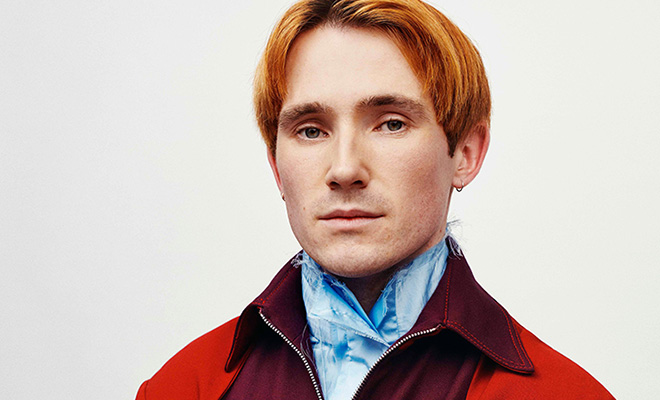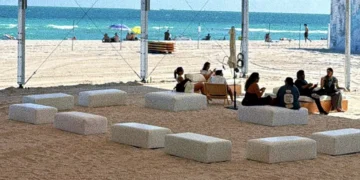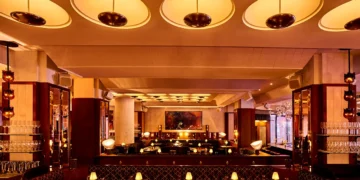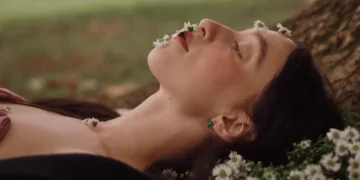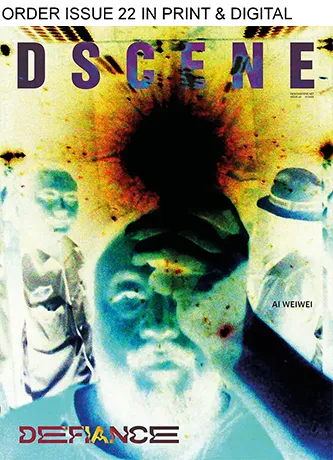
Where does your LOVE of fashion come from? – I have no idea, and I wouldn’t say it’s necessarily a love of fashion at all. I love a lot of things about fashion. For example, I believe entirely in art, craft, community, creative practice, cut, form; in the people who physically make these things. In the importance of dress in constructing identities, whether politically or personally. But I am categorically against the fashion system—the many ways of exploiting labor—from exporting cheap production methods to the speed of delivery, the dominance and unlegislated imposed workforce of terrible brands; prison laborers exploitation, and the removal of culture from textiles. These are huge global issues that are swept under the carpet but are vital for progress. I always feel like I have one foot in and one foot out of the industry. In any case, I’m from far outside of it, so perhaps it makes it easier for me to challenge it.
With the ongoing pandemic, the conversation about truly sustainable fashion has taken a backseat. How do we bring the topic back into focus? – Dialogue, education, access. Sustainable fashion was barely a thing when I established my brand. It’s been really hard graft to prove that sustainable or ethical fashion can be desirable, bold, brilliant, important to customers, etc. We’re at a point now where large brands and influencers have noticed the potential within the capitalist model for sustainability. Sustainability under capitalism is not sustainable—it will continue to take equal, if not more resources from vulnerable places and people, and it will grow alongside all of the non-sustainable fashion which is a massive problem. Also, education is far too expensive and therefore only the wealthier can learn. Young people are the most important for the future of this conversation. We owe it to them to create resources where they can learn and be involved in this conversation; we all have to bear this responsibility. Except that there aren’t black and white solutions and there are a lot of nuances and grey areas that have to be discussed.
Most fashion marketing assumes that consumers are silly, it treats people as vulnerable and plays on their self-worth — no different from influencers. Consumers are constantly educating themselves, they are absorbing all the time. As a designer/artist, I want what I do to work towards changing the conversation — this absolutely won’t garner the most likes or popularity, but the work is important
How can independent brands like yours, that are truly dedicated to sustainability, stand apart from the “sustainability” used only as a marketing gimmick by fast fashion? – I think it’s obvious — when a conglomerate tries to sell a piece as sustainable because they’re inspired by nature, the majority of people can smell that bullshit a mile off. Most fashion marketing assumes that consumers are silly, it treats people as vulnerable and plays on their self-worth — no different from influencers. Consumers are constantly educating themselves, they are absorbing all the time. As a designer/artist, I want what I do to work towards changing the conversation — this absolutely won’t garner the most likes or popularity, but the work is important. I don’t make authentic sustainable clothes that aren’t forward-thinking or experimental in terms of cut or form; or questioning boundaries between clothing, sculpture, space, and form. That’s my passion, but I feel it’s important to pass on my knowledge, share research, be transparent and open with how we work and how things are made.

How would you describe your approach to sustainability in fashion? – Respect, starting with the people, the community, the planet. Experiment, make mistakes, work on processes. Start and grow slowly, dedicate yourself to the work. My approach is extremely collaborative. From working with Irish weavers, certified Woolmark farms, to regenerating ocean waste, etc—they are all small efforts towards big change. I also understand my role within it, the customer in many ways is me. I want to be excited and challenged, as well as transparent, and have respect for every single person in my supply chain. I know who has dyed our yarn, knitted our pieces, cut the garment, and I know all of our sewists. I’m not from this country[the UK], and I’m from a very working-class background—which I wasn’t really aware of until I came to the UK. But the luxury in this work for me is learning—every season, every project, every sculpture show, every performance—there is huge luxury in that. I never had lots of money growing up, so I don’t value good work on sales or growth. It’s a sort of stubborn integrity that I can’t shake.
Is aesthetic attraction also an environmental imperative? – Yes. Respect your customer and make them the best thing that you can. My dad is a painter and a decorator, and I spent years working with him on building sites. I was taught diligence and dedication there. Do your work well, be proud of it — you owe it to the person paying for it. There’s absolutely no difference whether it’s finishing a building off or delivering a piece to the MoMA.
Have we lost our way, thinking of fashion as more than just something to consume? – More than anything! I honestly believe this is because fashion, textiles, and most artisanal crafts come from female-led spaces. Capitalism has tried to eliminate the voices of anyone but the patriarchal norm. We need to change that—we need to respect and cherish craft, understand its history, its cultural relevance because speaking about fashion and textiles as frivolous is a massive disservice. Allowing fashion to be something that can only be consumed is a problem, it eliminates many people from the experience. We need more exhibitions, more try-ons, more shows, a more open conversation.
You have been able to not only maintain Richard Malone as a sustainable brand but also as a cool one. What do you think defines a brand as authentic? – Experimentation. I don’t sketch fashion or collage clothing—I start sewing and sculpting. I never wanted to be tied down to a zeitgeist or a trend. I think it almost important to expect nothing from me, it could all change in a new body of work. But I think there is an honest voice that grounds everything. It’s just me really, it has all my questions and all my histories within it.
Love is respect and admiration, honesty and friendship respectfully shared, without pressure to perform or be anything that you’re not. It’s an endless conversation, and it’s the most human thing there is
After presenting your latest collection digitally, what advice do you have for connecting with a physical community in a digital age? – This time will pass. At times I have struggled with justifying making work, but it’s important for my mental health—it’s been a place of solace and a means of expressing what I can for as long as I can remember. This horrific time is another challenge and another chapter, that’s how I look at it. It’s impossible to represent the feelings or expressiveness that comes with wearing certain pieces or the change you might experience from being in something totally different. It’s the same invisible thing that explains why we hold on to certain garments for memories. It can’t truly be expressed digitally, so it has to be something new—hence the movement videos, new challenges, new expression, new delivery. It will be thrilling when we can touch and hold each other again, and garments and textiles play a really important role in this sensory experience. It’s a real nod to humanity.
You talked in the past about the obsolete system of seasonality in fashion, yet even in the digitalized fashion week month, we are still trying to stick to seasons as a form. How can we change it? – It’s tricky—my garments aren’t sold or produced seasonally. There are 2 dedicated times a year when people spend time looking at new fashion, and as a young designer you can, of course, benefit from this, but it’s not vital. I think this could be much less, and not all brands need a show.
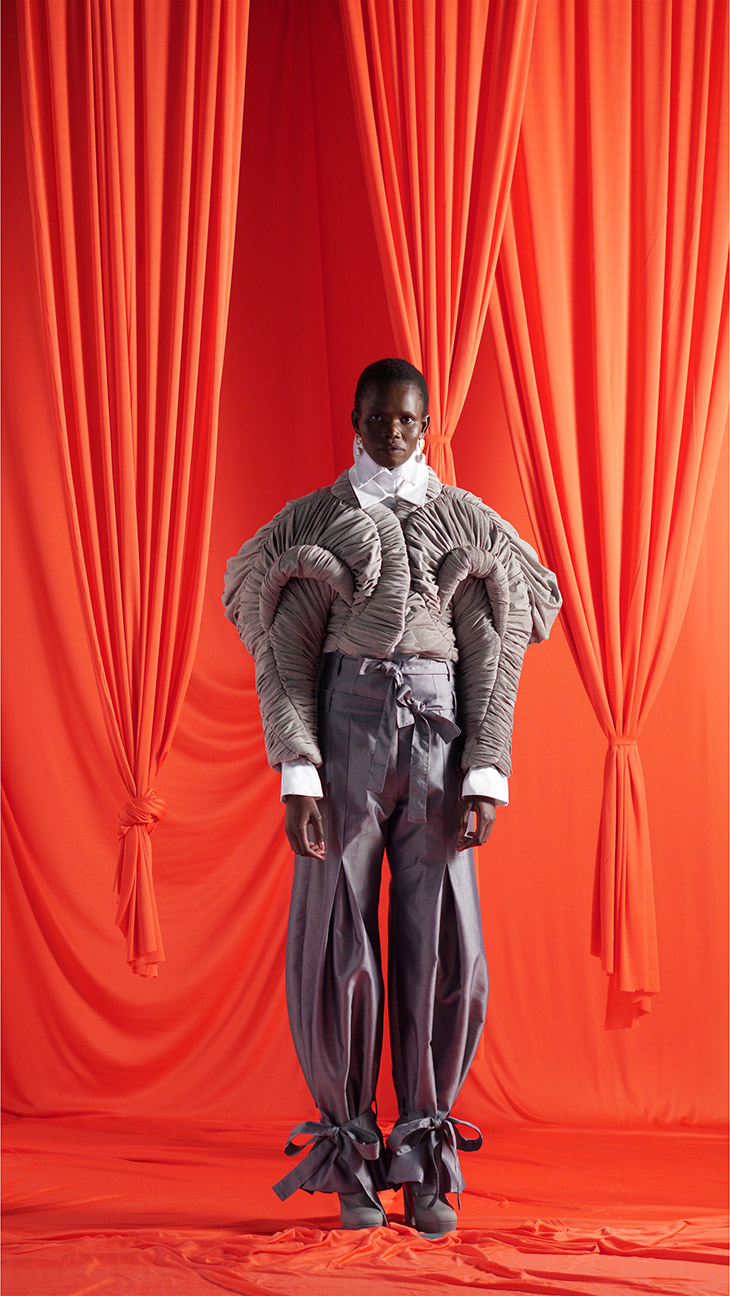
Is there a common motivation underlying everything that you do as a fashion designer? – With all of my work, whether it’s the fashion collections, textiles, furniture, or sculpture, it’s all the same language, and I really believe it’s only half-developed. My only motivation is that I can’t not. It’s a real lifeline for me — it’s love, chaos, it’s hysterical, funny, sad, disappointing…but it’s life, and I wouldn’t change that.
What do you LOVE most about your job? – The people—all the people who I adore and get to spend time with.
How would you define LOVE? – Love is respect and admiration, honesty and friendship respectfully shared, without pressure to perform or be anything that you’re not. It’s an endless conversation, and it’s the most human thing there is.
What is your favourite LOVE quote? – “If we want the rewards of being loved, we have to submit to the mortifying ordeal of being known.” -Tim Kreider
Keep up with Richard Malone on Instagram @richardmalone
Interview originally published in DSCENE Magazine’s Issue 15 – Read it now in print or digital.
